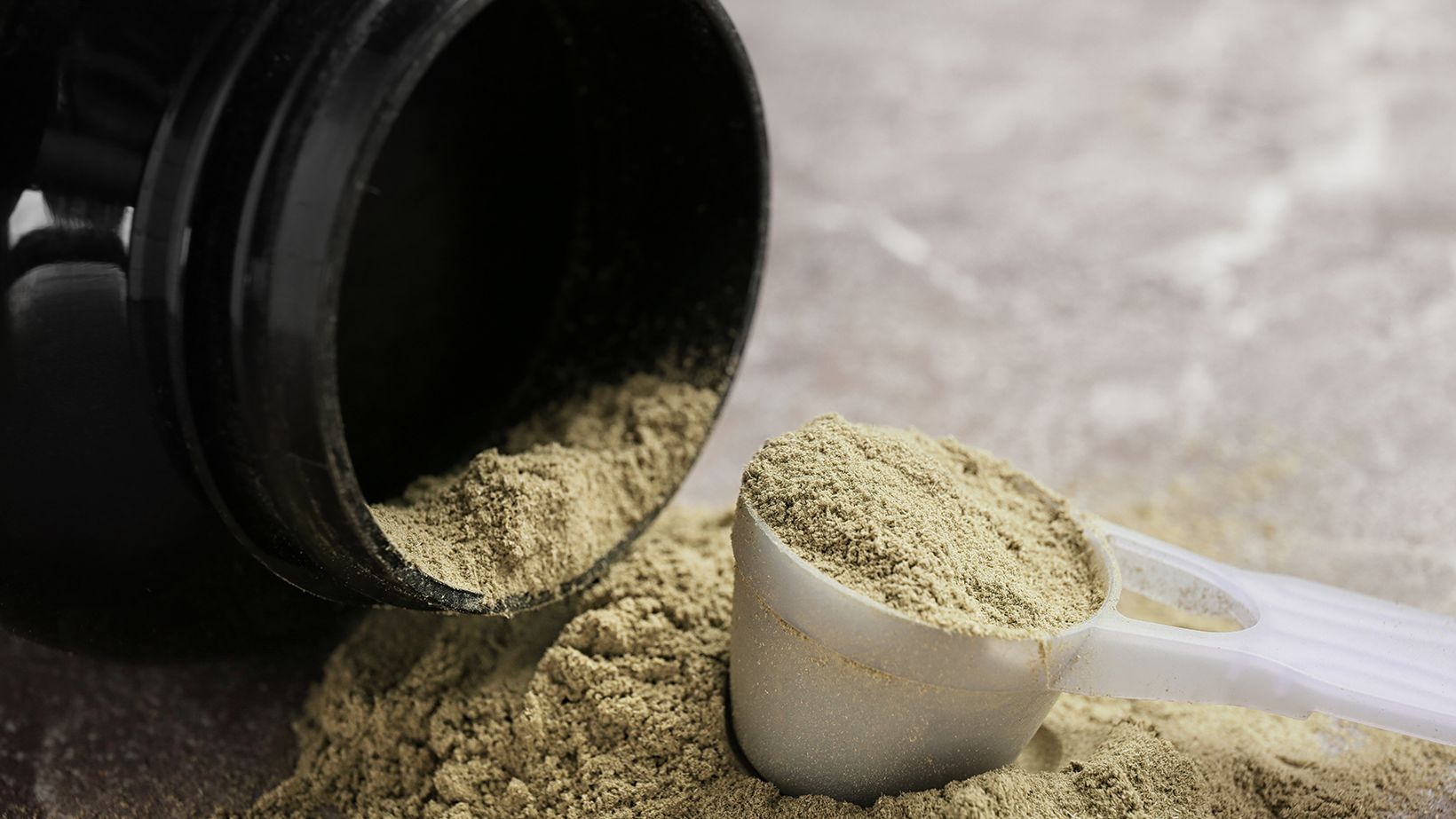Athletes know that consuming enough dietary protein is essential to building muscle and retaining it when dieting for fat loss. However, with ever-increasing demands for our time, we simply don’t always have enough time in the day to prep, cook, clean, and eat all the food that’s required to meet our physique and performance goals along with doing everything else that needs to be done before day’s end.
That’s when having a high-quality protein powder comes in handy.
Protein powder provides a cost-effective, delicious, and no-prep way to help make sure you always hit your protein goals for the day.
The “problem” is deciding what is the right protein for you?
Much like trying to pick the best Pre-Workout, selecting the best protein powder for your needs can be confusing, especially if you’ve never used protein powder before.
To put it simply, there are hundreds and hundreds of options available when it comes to selecting a protein powder. And to make things just a bit more complicated (as if they weren’t complicated enough already), not all protein powders are the same.
Just take a cursory glance at any retailer, and you’ll find”
- Whey protein powder (concentrates, isolates, and blends)
- Casein protein
- Milk protein
- Beef protein
- Egg protein
You’ll also find a number of plant-based protein powders including brown rice, pea, soy, hemp, chia, and pumpkin seed.
Given all of these options, how are you supposed to know which one is right for you?
Sure, the sales clerk at the store will try to push one on you (but that’s likely because he’s getting a premium commission on every tub of that particular product sold). The simple truth of the matter is that you don’t need a sales clerk or “digital assistant” to help you find the best protein powder for your needs, you just need to answer a few simple questions.
Before we get to those, let’s briefly review the different types of protein you’re most likely to purchase.
Common Types of Protein Powder
Whey Protein
Whey protein is far and away the most commonly consumed protein powder on the market. It is derived from milk and it’s rich in BCAAs, particularly leucine (the “anabolic trigger” of muscle growth).
Whey accounts for 20% of the protein content in milk, with casein (the next protein powder on our list) making up the other 80%.
The reason whey protein is so popular is due to its high leucine content, but also its fast rate of digestion, making it ideal as a post-workout shake.
Now, whey protein can typically be found in one of three forms:
● Concentrate — the least refined form of whey, containing anywhere between 35-80% protein by mass. The remaining percentage is composed of a mix of carbohydrates (lactose) and milk fat. Concentrates tend to be thicker mixing than isolates and have a better “mouthfeel”, but they may contain too many calories or lactose for those sensitive to dairy.
● Isolate — a step up from concentrate that must contain a minimum of 90% protein by mass. This means isolate is both higher in protein on a per gram basis compared to concentrate as well as lower in carbohydrates, lactose, fat, and calories. This is the go-to option for those who want a whey protein powder, but may be sensitive to the more lactose-heavy concentrates.
● Hydrolysate — the most refined form of whey protein. Hydrolyzed whey is “pre-digested” by chemical enzymes which break down the peptide bonds in whey protein allowing for ultra-fast digestion. It’s also extremely low in lactose and fat, but the extra manufacturing comes at a cost as whey hydrolysates tend to mix thinner and have a bit of a chemical-like taste. For this reason, hydrolysates are usually incorporated into whey protein blends to capitalize on their higher protein content while also benefiting from the superior taste and texture of isolates and concentrates
● Whey Blend — usually contains a proprietary mix of at least two, and sometimes all three, forms of whey protein. Using a blend of whey proteins allows for a high protein content along with a very satisfying mouthfeel while keeping carbs, calories, lactose, and fat in check.

Casein Protein
The other major protein in milk, casein accounts for 80% of the protein content of milk. As opposed to whey protein, which is incredibly fast digesting, casein protein is very, very slow digesting, taking up to 7-8 hours to digest.
Related – Protein and Slow Digesting Foods
This makes it ideal as a pre-bed snack to provide a steady release of amino acids into the bloodstream to support muscle growth and recovery while you sleep. Casein also works well as a between-meal snack since it may have a greater impact on satiety, than the faster-digesting whey protein.
Casein is incredibly thick mixing and tasting, which also helps make it feel more indulgent when consuming.
Beef Protein
Red meat is an excellent source of protein, complete with all the essential amino acids needed to build muscle, and it’s even got creatine in there to.
However, your beef protein powder likely isn’t made from dehydrated, pulverized, and separated filet mignon. The vast majority of beef isolate protein powders on the market are made from hydrolyzed gelatin and/or collagen. d think beef would be a great source to use for protein, as it delivers a complete amino acid profile, including BCAAs, plus other muscle-builders like creatine and glutamine. [4]
While gelatin and collagen might offer support for joint health and the appearance of your skin, it’s not the best protein if your goal is muscle building. The reason for this is that collagen protein is high in glycine, proline, arginine, and hydroxyproline, but it’s relatively low in leucine.
Egg Protein
Eggs are often touted as nature’s “perfect” protein due to the fact that they score a 100 on the protein bioavailability scale, which means our bodies can efficiently absorb the protein in eggs. [5]
Egg protein powders are made from dehydrated egg whites that are pulverized and separated into a fine powder, which typically mixes very easily. Egg protein is also a great option for those who may have dairy sensitivities or allergies.
The one issue with 100% pure egg protein powders is that sometimes they can taste rather eggy.
Plant Protein
As the name implies, plant proteins encompass all of the protein powder options derived from plant sources. The products have experienced a tremendous surge in popularity in recent years as consumers have begun embracing more plant-heavy diets for several reasons.
Common sources for plant protein powders include pea, brown rice, soy, hemp, quinoa, and a number of seeds, including pumpkin and chia.
The minor “issue” with plant protein powders is that they may not offer a complete source of protein as not all plants contain sufficient levels of all the EAAs. Brown rice for example is an incomplete protein, but quinoa, pea, and soy are all considered complete proteins.
For this reason, if you’re interested in purchasing a plant protein powder, it’s generally a good idea to purchase one that contains a variety of plant-based proteins, so that you can ensure you’re getting a complete EAA profile to support protein synthesis, muscle growth, and recovery.
This is why Nutrex’s brand new, all-natural Plant Protein contains a mix of FOUR different plant protein sources, including pea protein, brown rice protein, pumpkin seed, and sunflower seed.
Now, a common issue with plant proteins is that they tend to mix up rather thick, and can sometimes taste a bit like grass or dirt. To work around this problem, Nutrex Plant Protein includes MCT powder.
MCT (medium-chain triglycerides) are a type of saturated fat that supply the body with a type of quick-burning energy (similar to glucose but without the insulin spike) that can also help the body increase fat burning and energy expenditure! [6]
Furthermore, MCT powder also helps improve the mouthfeel of the product, since it’s soluble in water. This helps plant protein to have a creamier, more pleasing texture, similar to that of whey protein as opposed to the traditionally chalky texture of other plant proteins.
Important Questions to Consider When Choosing Your Protein Powder
Now that you’ve got a grasp on the different options you’ll encounter when purchasing your next protein powder, it’s time to give you some additional pointers for how to select the right powder for your needs.
All you need to do that is to answer a few simple questions:
1. Are you sensitive to lactose or allergic to dairy?
If so, you will want to bypass the concentrates and try either a whey protein isolate (like Nutrex IsoFit), egg protein, or a Nutrex Plant Protein.
If not, feel free to try any whey protein powder as it supplies the body with highly bioavailable, fast-digesting protein rich in BCAAs.
2. Are you allergic to eggs?
If you answered yes, then you’ll want to opt for any milk-based protein powder (whey, casein, or whey blend) or a plant-based protein.
3. Are you vegan?
If you answered yes, then this makes it pretty simple — you’ll need to go with plant protein
4. Are you looking to diversify your diet?
Most athletes and recreational lifters already consume a fair amount of dairy products, either from milk, yogurt, cheese, or whey protein. If you’re interested in expanding your horizons and diversifying your diet a bit, then you’ll want to check out plant protein powders.
In addition to supplying a complete protein source that’s comparable to whey [7], pea protein also has some research suggesting that it may help lower cholesterol and blood pressure, thereby supporting cardiovascular health. [8] [9]
Takeaway
There are a tremendous amount of options available when it comes to choosing your protein powder. Use the information and tips in this guide to help you find the one that’s best for you.
References
2. Hall WL, et al; “Casein and whey exert different effects on plasma amino acid profiles, gastrointestinal hormone secretion and appetite”; Br J Nutr; 2003
3. McDonough FE, et al; “Composition and properties of whey protein concentrates from ultrafiltration”; J Dairy Sci.; 1974;
4. Zakhariev, T., Ibrishimov, N., & Monov, G. (1980). [Amino acid makeup of beef]. Veterinarno-meditsinski nauki, 17(8), 31–35.
5. Hoffman, Jay R., and Michael J. Falvo; “Protein – Which Is Best?”; Journal of Sports Science & Medicine; September 2004: 118–130;
6. Clegg, M; “Medium-chain triglycerides are advantageous in promoting weight loss although not beneficial to exercise performance”; Int J Food Sci Nutr; November 2010; 61(7):653-79;
7. Babault et al; “Pea proteins oral supplementation promotes muscle thickness gains during resistance training: a double-blind, randomized, Placebo-controlled clinical trial vs. Whey protein”; Journal of the International Society of Sports Nutrition; 2015;
8. Rigamonti, E., Parolini, C., Marchesi, M., Diani, E., Brambilla, S., Sirtori, C. R. and Chiesa, G; “Hypolipidemic effect of dietary pea proteins: Impact on genes regulating hepatic lipid metabolism”; Molecular Nutrition and Food Research; 54: S24–S30
9. Li, H; “Blood pressure lowering effect of a pea protein hydrolysate in hypertensive rats and humans”; Journal of Agricultural and Food Chemistry; September 2011; 59(18):9854-60









